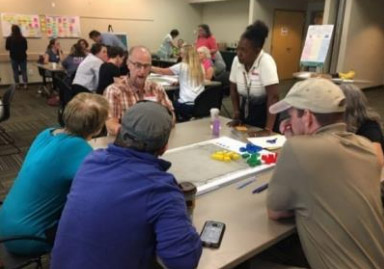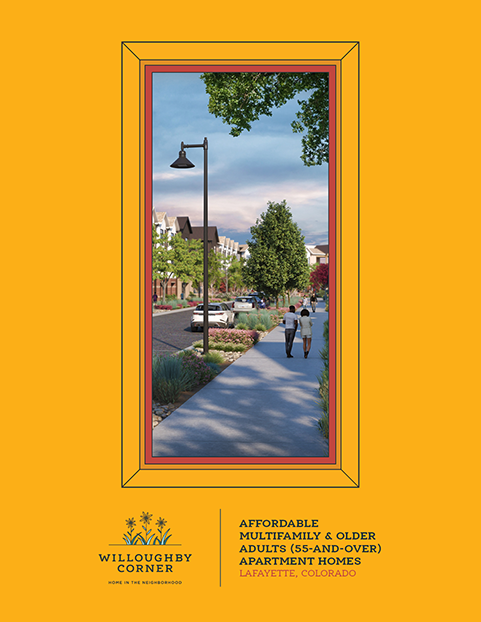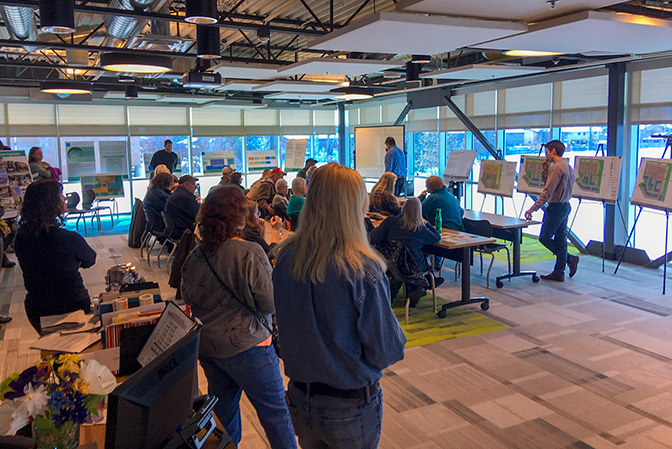Building the Vision
Willoughby Corner has been years in the making and reflects strong neighborhood support and community involvement. Boulder County, Boulder County Housing Authority (BCHA), and City of Lafayette partnered in 2017 to buy a 24-acre parcel of land near 120th Street and East Emma Street. The goal was to create a neighborhood with 400 permanently affordable homes for local families, older adults, and the workforce.
The site was chosen for its location near services, schools, and transportation routes. It supports Lafayette’s goals for sustainability, connectivity, and more affordable housing options.

Early character sketch by Coburn Architects of a design option for the neighborhood of affordable workforce housing
Community Engagement
From the start, BCHA worked closely with residents and local partners to design a neighborhood that fits Lafayette’s character and needs.
- In 2018, BCHA launched a Public Engagement Plan that included open houses, community presentations, and the creation of the East Lafayette Advisory Committee (ELAC) — a group of residents and stakeholders who provided feedback throughout the planning process.
- More than 5,000 flyers and postcards were shared with nearby homes and businesses.
- 25 community meetings were held (including three in Spanish), along with multiple design workshops and open houses attended by over 500 people.
- BCHA also met individually with neighborhood groups and local businesses to gather input on housing design, traffic, green space, and community priorities.
Design Workshops
In August 2018, BCHA and its engagement firm, The Pachner Company, hosted a community design workshop. About 50 residents shared their ideas for housing types, trails, parks, and traffic flow. Common themes included:
- Maintaining buffers along 120th Street and Emma Street
- Supporting multi-modal transportation connections
- Balancing housing density across the site
- Ensuring the design reflects Lafayette’s mountain and small-town character
The community’s feedback directly shaped early site plans, which were reviewed and refined with ELAC input through early 2019.

A Community Name
The name Willoughby Corner came from a community naming contest in 2018, where residents submitted more than 40 ideas. Chosen for its historical and local meaning, the name honors the Willoughby Mine, a key part of Lafayette’s coal mining past, and the saying “it takes a village”—a reflection of the town’s strong sense of community.
Funding and Next Steps
Lafayette’s Affordable Housing Development Fee, established in 2016 and later expanded to commercial projects, helps fund permanently affordable housing like Willoughby Corner. In 2022, BCHA received 4% Low-Income Housing Tax Credits to support the next phase of the development, ensuring that Willoughby Corner will remain affordable for generations to come.








